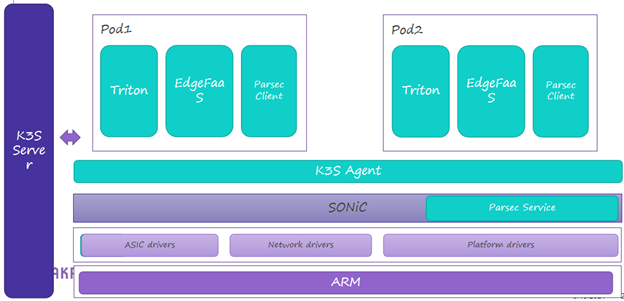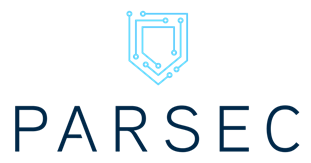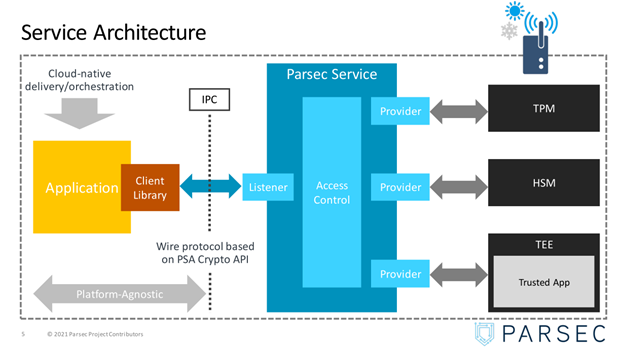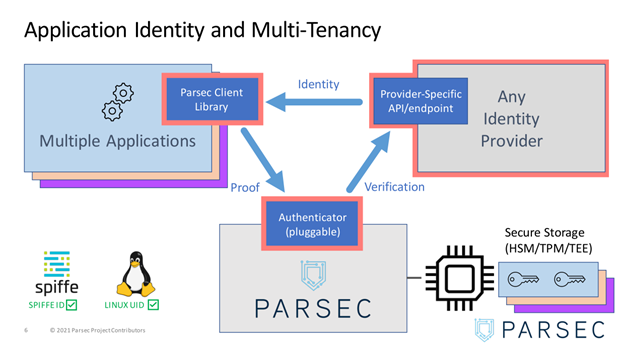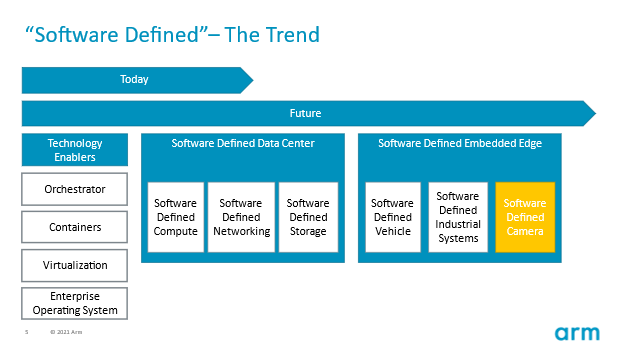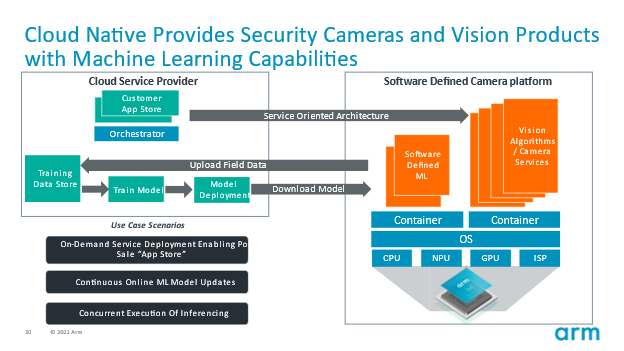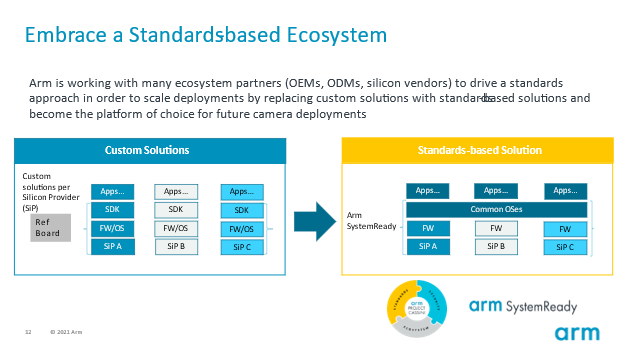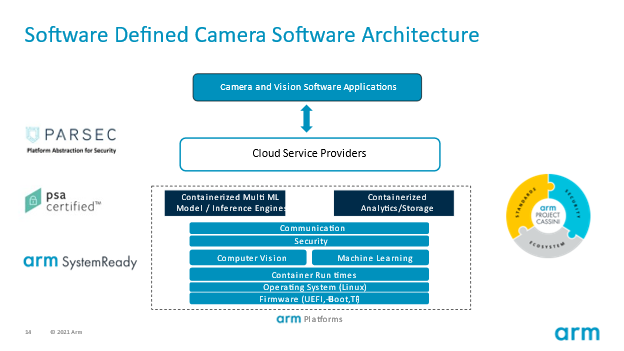Overview of Project Cassini - IoT and Infrastructure Edge Blueprint Family
Smart Cities blueprint
Introduction
This document provides an overview of the Smart Cities blueprint as well as an overview of key features and implementations of PARSEC in Akraino Release 5.
Overview
Akraino Blueprint: Smart Cities
The purpose of Smart Cities blueprint is to provide edge computing platform base on Arm Soc , Improve deployment flexibility and security in the edge computing. The high-level relationships between the functional domains is shown in the figure below:
Figure 1. Smart Cities Functional Domains.
For the full description of the Smart Cities Reference Architecture please refer to the Smart Cities Documents.
Smart Cities in Akraino R5
Key features and implementations in Akraino Release 5:
Smart Cities blueprint’s security components is PARSEC. It is first released in Akraino release 5. The following is a brief introduction to PARSEC.
Parsec is the Platform AbstRaction for SECurity, a new open-source initiative to provide a common API to secure services in a platform-agnostic way.
Parsec aims to define a universal software standard for interacting with secure object storage and cryptography services, creating a common way to interface with functions that would traditionally have been accessed by more specialised APIs. Parsec establishes an ecosystem of developer-friendly libraries in a variety of popular programming languages. Each library is designed to be highly ergonomic and simple to consume. This growing ecosystem will put secure facilities at the fingertips of developers across a broad range of use cases in infrastructure computing, edge computing and the secure Internet of Things.
For more information of PARSEC:
https://parallaxsecond.github.io/parsec-book/
For more information of Smart Cities blueprint:
https://wiki.akraino.org/display/AK/Smart+Cities
Software Defined Camera (SDC) blueprint
Parag Beeraka
Akraino Edge Stack is an open source project under the LF Edge umbrella that creates edge software stacks that supports high-availability cloud services optimized for edge computing systems and applications. It offers users new levels of flexibility to scale edge cloud services quickly, to maximize the applications and functions supported at the edge, and to help ensure the reliability of systems that must be up at all times. The Akraino Edge Stack platform integrates multiple open source projects to supply a holistic Edge Platform, Edge Application, and Developer APIs ecosystem.
- Akraino uses the “blueprint” concept to address specific Edge use cases to support an end-to-end solution.
- A blueprint is a declarative configuration of the entire stack-- i.e., edge platform that can support edge workloads and edge APIs.
- To address specific use cases, a blueprint architecture is developed by the community and a declarative configuration is used to define all the components used within that architecture such as hardware, software, tools to manage the entire stack, and method of deployment (Blueprints are maintained using full CI/CD integration and testing by the community for ready download and install).
For more information: https://www.lfedge.org/projects/akraino/ or https://wiki.akraino.org/.
Akraino is part of the LF Edge umbrella organization that establishes an open, interoperable framework for edge computing independent of hardware, silicon, cloud, or operating system. By bringing together industry leaders, LF Edge creates a common framework for hardware and software standards and best practices critical to sustaining current and future generations of IoT and edge devices.
LF Edge Projects address the challenge of industry fragmentation, and collaborates with end users, vendors, and developers to transform all aspects of the edge and accelerate open source developments.
Security Cameras are seeing increasing growth in all the subsegments such as commercial surveillance cameras, consumer surveillance cameras and in many other devices such as dashcams, baby monitors and other IoT vision devices. The total surveillance market is expected to be around $44B in the year 2025 growing at a CAGR of 13%. The other exciting part in this market along with the increase in the unit shipments of the surveillance cameras is the increasing use of artificial intelligence and machine learning in these cameras and IoT devices. It is estimated that there are already a billion cameras installed in the world and this number would reach 2 billion by the year 2024. However security cameras are very different from many other devices because once installed, they stay installed for more than 5+ years. So it is critical to ensure that these devices continue to provide enhanced functionality over time.
In today’s world, there are many technologies that are “Software defined”. This has been possible because of many advancements in technology – at the bottom of the stack, you have the Operating system, then the virtualization layer – which actually kicked of the original software defined compute with Virtual machines etc. Then came containers and then the orchestrators for the containers such as k8s, k3s - these technological advancements paved the path to define a software defined data center. In the datacenter, after software defined compute, software defined networking and software defined storage started to become norm. Now the time is prime to move software defined trend to the edge devices as well. This is really a transformation that has started across many segments such as Automotive – cars, trucks etc. We do see this trend applied to many other edge devices and one of them would be cameras or as we and many others call it as Smart Cameras. The idea here is that once you buy a camera, the hardware is advanced so that you will be receiving continuous software updates which can be neural network model updates catered to the specific data that you might have captured using the camera or other updates related to functionality and security of the device.
By designing future camera products with cloud native capabilities in mind, one will be able to scale camera and vision products to unprecedented levels. If all the applications are deployed using a service oriented architecture with containers, a device can be continuously updated. One of the key advantages of this architecture would be to enable new use case scenarios that one might not have envisioned in the past with a simple on demand service deployment post sale through an app store. A simple example can be to deploy a new and updated license plate recognition app a year after the purchase of cameras. At the same time one of the other key advantages with this architecture would be to enable continuous machine learning model updates based on the data pertinent to the camera installations i.e be able to use the data that it is capturing and use it to train the models. With this, the model would be relevant to the specific use-case thus increasing the value of the camera itself. All of this is possible due to enabling a service oriented architecture model using containers and thinking cloud native first.
The other important aspect that will really bring together the security camera and vision products is the adherence to common standards at the silicon and the platform level. Arm has started an initiative called Project Cassini and Arm SystemReady® is a key component of this initiative. As part of Arm SystemReady®, Arm is working with many ecosystem partners (OEMs, ODMs, silicon vendors) to drive a standards approach in order to scale deployments by replacing custom solutions with standards-based solutions and becoming the platform of choice for future camera deployments.
So we at Arm would like to provide a reference solution for future software defined cameras based on standards with focus on security, machine learning, imaging and cloud-native. The basis of the reference solution is a SystemReady® platform. SystemReady® platforms implement UEFi, U-Boot and Trusted Firmware based on specific standards. With the base software layers compliant to SystemReady®, standard linux distros such as Ubuntu, Yocto can be run on these platforms. Then the layer above would be a container orchestration layer to be able to run containerized applications, by using k3S. Then the layer above would be the Machine learning and Computer vision libraries. Arm has been providing support for machine learning through Arm-NN and Arm Compute library so that customers can develop their ML applications using standard ML frameworks such as PyTorch, Tensorflow etc. Similarly on the computer vision side, it is critical to support open standards such as Video 4 Linux, OpenCV and BLAS libraries. Now moving up the stack is security – this is where the example reference design will use PARSEC, which is an open source platform abstraction layer for security along with PSA certification process so that you know that the product will be secure when deployed in the field. The layer above would also provide containerized applications for inferencing, analytics and storage. Then on the top layer would be to provide the connectivity to the cloud with the capability to run camera and vision software applications, be able to take care of all the edge services etc.
Software defined cameras is a game changing initiative to enable the next generation of security and surveillance cameras that will support all the companies through the value chain.
